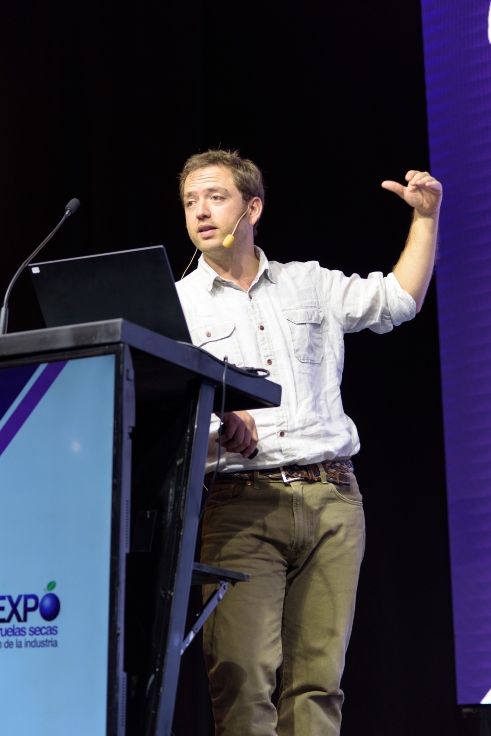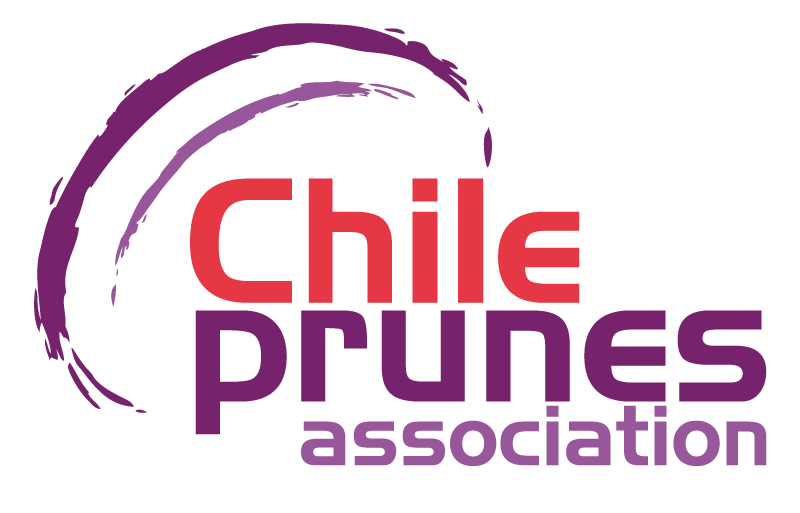Pablo Campino, member of the Technical Committee of Chileprunes and head of the D’Agen Plum Program of the Pacific Nut Company, spoke at the EXPO Punes 2023, referring to six major issues that must be worked on to achieve what the producer is looking for in terms of productivity, profitability, quality and sustainability of the fruits that leave the orchard:
“In new plantings, pruning, foliar alternatives, soil management, irrigation and water management and, finally, in harvest strategies, there are concrete alternatives to improve productivity, quality and condition of the orchards, reducing costs and improving yields,” he says. .
In the first point, of the new plantations, you can bet on a higher density. Indeed, while the traditional system considers a separation between each tree of 3.5 and 5 meters, which gives the possibility of 571 plants per hectare, we can go on to have a dual purpose production (fresh and dry) with separations of 3, 50 meters x 1.25 meters which gives 2,286 plants per hectare.
Another relevant point in productivity has to do with pruning. “The main function of having an orchard with quality potential, of the caliber of this season and the one that follows; it is to do a well-done pruning, ideally as manual as possible”. And he adds: “the benefits that we are going to have with a good pruning translate into production, which can be more than 20% of the income and when we skimp on pruning, we are mortgaging the orchard; because the benefit will undoubtedly be greater”.
A third point has to do with foliar alternatives. Some producers are using algae extract in their foliar applications, which contribute to the development of the fruit. For Campino, the use of these products helps to have better fruit set and retention, increasing productivity per hectare. “With the development of fruits, we are going to increase cell elongation and it will allow us to have a larger caliber, therefore, better profitability.”
As for soil management, it winks at plant covers that generate 4 great benefits: Improves infiltration, provides organic matter, fixes carbon and saves herbicides.
He also commented that the use of biofertilizers is being increasingly used, since they can be generated in the same orchard with the worm. “It is about generating biofertilizers in the fields, where a vermicomposting pool is installed that is injected into the irrigation booth, generating biofertilizer. And this is applied directly to the orchard throughout our season, which allows us to lower the costs of traditional fertilization progressively over time and at the same time we are sustainable.” In addition, savings are generated in traditional fertilizers, the soil microbiota, the vigor of the plants, the soil structure are improved, and organic matter and root development are provided to the orchard.
If we have healthy soil, we will have healthy plant and healthy fruit, he says.
A fifth key factor, about which a lot may have been said, is that of Irrigation and Water Management. Key in the matter is to make a water balance of the field, along with having storage tanks, wells and covering channels. Consider underground irrigation that saves between 30% to 50% of water. Campino points out that plum trees require 7,000 mt3/hectare per year, and in production, 1 liter/sec for one hectare of fruit.
He finally made reference to harvesting strategies. “The focus of a good harvest is a well-directed strategy to achieve well-finished fruit, so that the greatest amount of fruit is harvested at the right time. I mean 22 to 24 degrees Brix, hopefully more, but we don’t have losses due to falling fruit or it is in a state where it is very soft.”
An alternative in the harvest is to carry out two passes where the greatest amount of fruit can be collected. Another option is to spend three to five days later with the machine, so that you can remove what is left and then finish going over. “With the objective of achieving the highest amount of soluble solids, to have firm fruit,” he adds.



